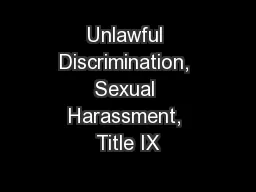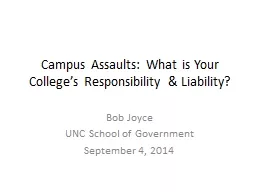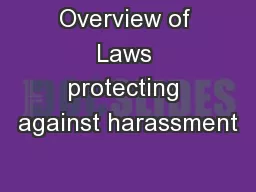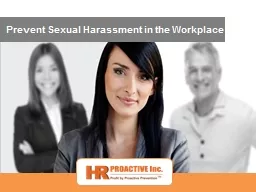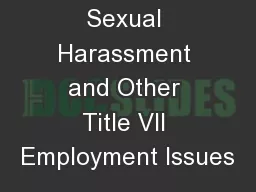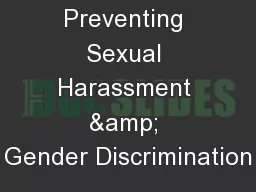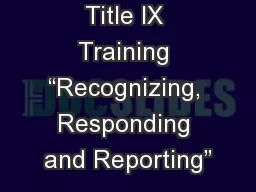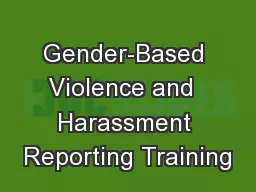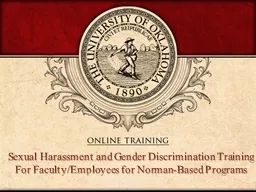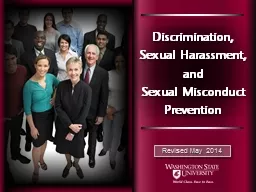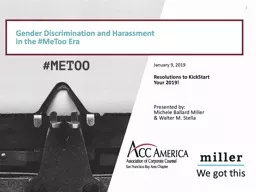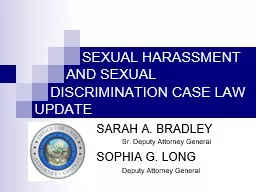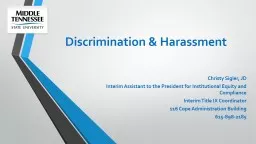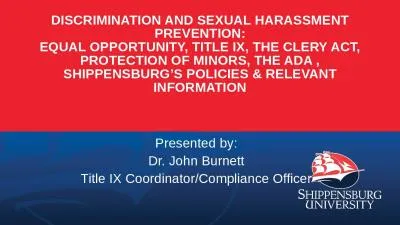PPT-Unlawful Discrimination, Sexual Harassment, Title IX
Author : debby-jeon | Published Date : 2018-09-20
amp Workplace Violence Training Purpose Unlawful Discrimination amp Sexual Harassment Keep pressing the right arrow on your keyboard to proceed with this training
Presentation Embed Code
Download Presentation
Download Presentation The PPT/PDF document "Unlawful Discrimination, Sexual Harassme..." is the property of its rightful owner. Permission is granted to download and print the materials on this website for personal, non-commercial use only, and to display it on your personal computer provided you do not modify the materials and that you retain all copyright notices contained in the materials. By downloading content from our website, you accept the terms of this agreement.
Unlawful Discrimination, Sexual Harassment, Title IX: Transcript
Download Rules Of Document
"Unlawful Discrimination, Sexual Harassment, Title IX"The content belongs to its owner. You may download and print it for personal use, without modification, and keep all copyright notices. By downloading, you agree to these terms.
Related Documents

